Martin Ruffin Double Exposes His Slide Film to Make Art
“Fundamentally, I want to make photos that represent my own experience of reality,” says UK based film photographer and record producer Martin Ruffin about his photographic style. He hopes to be shooting film for many years to come and experiments with a variety of stock for this. He’s also an advocate for shooting consistently, to understand better what one prefers to specialize in.
Want to get your work featured? Here’s how to do it!
The possibilities in digital photography are infinite these days, but we still see photographers experiment with analog photography. Maybe it’s the unpredictability of how chemicals and light can intermingle to produce a result. Perhaps it’s the eager anticipation before the image is developed, resulting in either heartbreak or delight. It could also be how we subconsciously improve our resourcefulness because of the limited nature (and lately extravagant costs) of film stock. Or maybe it’s a combination of all this. Martin takes these challenges in stride and obsessively pushes himself to be better at his art. He loves keeping his eyes open for finding unexpected subjects and angles in the ordinary sights of life.
Essential Photo Gear Used by Martin Ruffin
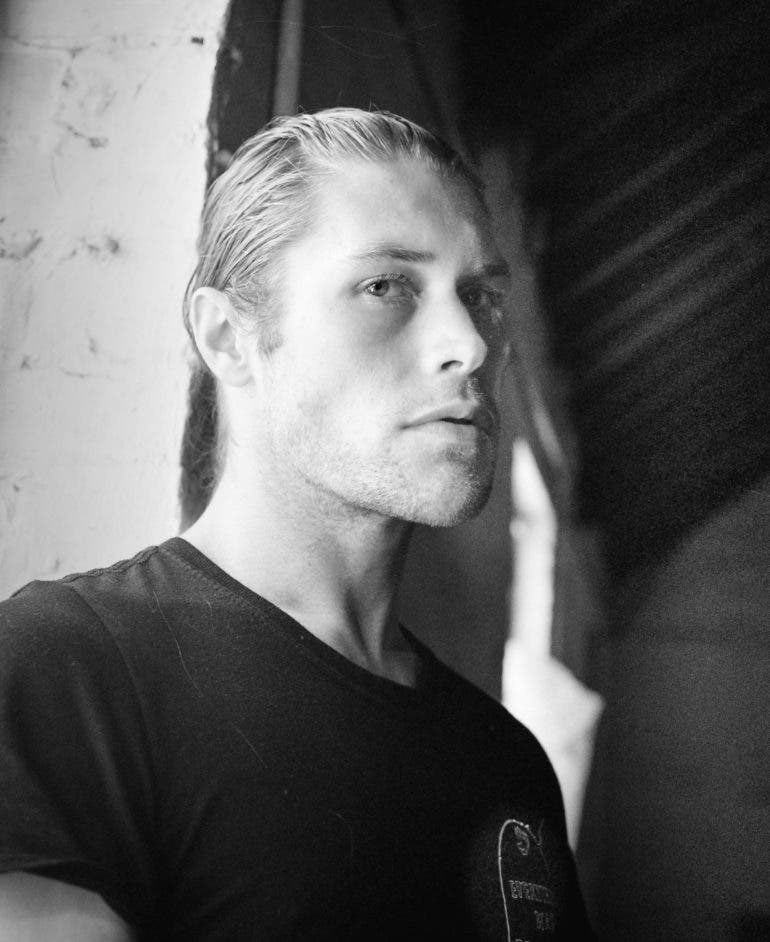
Martin told us:
I primarily use two cameras for all of my personal work, a Nikon FE(or FE2) and a Mamiya RB67, and mostly shoot with a 50, 35 or 24mm prime(and their equivalent focal lengths on the Mamiya). I’m not really a big fan of obsessing over camera gear; if the path from lens-film is clean, no body does anything more magical than anything else, other than in terms of pure ergonomics.
The Phoblographer: Please tell us about yourself and how you got into photography.
Martin Ruffin: I got into photography pretty late, getting myself a Nikon F301 at university (the cheapest decent body I could find at the time) while perfunctorily studying for a music degree. Physical photo albums had always marked the passage of time within my family, and I had a cursory interest in visual art, but it wasn’t until getting this body and experimenting myself that I realised the practice of photography perhaps had a bigger place in my life than that of mere souvenir-maker. I remember being pretty immediately enamoured by the ease and speed with which I could take an idea from conception to execution, something very unfamiliar within my obsessively overelaborate music-making up to that point.
After the honeymoon period inevitably subsided, this camera drunkenly accompanied me around the UK and Europe, touring in bands for the next 4-5 years, picking up mementos here and there, but nothing too considered (film expenses were tough to justify when eating wasn’t always guaranteed). Anyway, a job as a session musician with another band led to their label catching wind of my shots and hiring me to take photos in a more serious capacity on the road. The pay was awful, but enough to afford film/development consistently, which enabled me to deep-dive into what I could actually create and express with this thing. Delving into new lenses, bodies, filters, films, ideas, and techniques to achieve them became an obsession. I made sure to dedicate time to every day for the next few years, after which there wasn’t really much turning back.
These days the practice of photography serves several longstanding, therapeutic purposes; to find curiosity in the ordinary, to stay observant, force-time spent in secluded bits of nature, as something to hide behind when my public anxiety gets too much, and as a vehicle in which I can both express an authentic, passionate part of myself, or when I’m not feeling being in transmit mode, find a technical problem/solution that can occupy my attention at any time. Whatever your mind’s like, you can find a home in photography for it, and I love that.

The Phoblographer: How long have you been shooting film? Is it something you do regularly or just as an occasional break to get away from megapixels?
Martin Ruffin: I’ve shot film from the outset, learning from my mistakes as I’ve gone for a little over 10 years now. It’s an oft-repeated cliché, but I welcome the enforced deliberation and attention to detail that shooting on film brings; I know what to expect from it visually and see no reason to change that which serves me. It wasn’t until around 3 years ago that I got a second-hand DSLR for the occasional music/BTS shoot where film wasn’t viable, but…. mainly to serve as a film scanner. I’d happily shoot film for absolutely everything if there were still some affordable 800+ ISO colour stocks available, but anything I’m going to be emotionally invested in, or intend to make prints of, will always be shot on film. My long-term plan is to set up a color darkroom and focus on wet-printing, so this is the way.

The Phoblographer: Tell us about the inspiration behind ‘Into Eden’. How did the idea for this image come about?
Martin Ruffin: To be honest, while I do enjoy planning and executing more complicated abstract ideas, this shot (as is the case with the majority of my work) was a spontaneous event. To me, photography, like music, is a mostly improvisational act of giving yourself a set of variables within which to operate, and trusting that with enough practice, technical understanding, reflection, and resultant intuition, that whether on not the result is exactly what was intended, it’ll be in the ballpark. In this case, I’d been driving back from a skatepark in France and decided to stop at a bridge where the light felt special, with a few colorful flower baskets dotted around its perimeter, and how the sun fell upon them was enough to make me stop and think there was something to be shot there. I tried a few variations, double-exposing them with clouds, water, and a few single shots, but this one felt like the right kind of ethereal to my mind’s eye. While I have pretty clear ideas on what I’m trying to achieve visually and can tell close to immediately when something doesn’t feel like ‘me’. I’m not much for planning everything, beyond putting myself in situations where I can seek out some inspiration or trying to stay observant enough to notice when those situations appear. Getting out and doing shit consistently is more important; you figure out what to visually prioritise along the way.

Lens filters are a very fundamental part of my workflow, and I use a Cokin system on each camera, stacking prisms, diffraction filters, colour gradients and the weird and wonderful in between, to make sure the image the film is capturing is as close to final as possible. As a guitarist by trade, lens filters to me feel like effects pedals, a way to turn the ordinary into something more ethereal.
The Phoblographer: You do love your Lomography. With all the contrast and saturation involved in it, do you feel film lovers dive into it to be different from most mainstream film stock?
Martin Ruffin: I guess I do! I’m a big fan of Lomography Purple, in the right context, but generally, working with expired film stocks and similar Lomography-esque materials hasn’t been so much of an intentional departure from conventional film, more so an enforced reaction to its increasingly prohibitive cost. I want to be shooting film as long as I can, and I’m usually broke, so if that means working with expired/alternative materials, so be it. It pisses me off tremendously that someone like myself would’ve found it nigh on impossible to invest myself into this medium, and find the value within that, to the same extent as I’ve been able to, were I to be starting out now. Anyhow, I’m not trying to capture realism authentically, I’m looking to twist it, and the happy accidents that find themselves occurring with unpredictable film stocks tend to be pretty conducive to that. Without the benefit of a formal art or photography education, my first reference point for this was the work of an artist called Alison Scarpulla, whose work with experimental processes really opened my eyes up to what could be done with this kind of photography. Thanks Alison!

The Phoblographer: What are some of your other favourite film stocks? Which one excites you the most?
Martin Ruffin: Beyond anything else, probably my favourite experience within my work is the feeling I get when pulling a roll of slide film out of my developing tank, holding it up to the light, and seeing immediately what I’ve ended up with. Scanning slide film is a breeze, given the lack of inversion/post-processing required, and I’d do all my colour work on it if Cibachrome was still a thing. I’d tend to want to use Provia or expired Ektachrome, the latter being more muted and the former better in low light, long exposure territory. Otherwise, HP5, Tri-X, Superia 400, and occasionally Portra or Ektar are my go-to’s. I’ll happily use any stock really, provided I’ve got enough of it to get used to its characteristics.
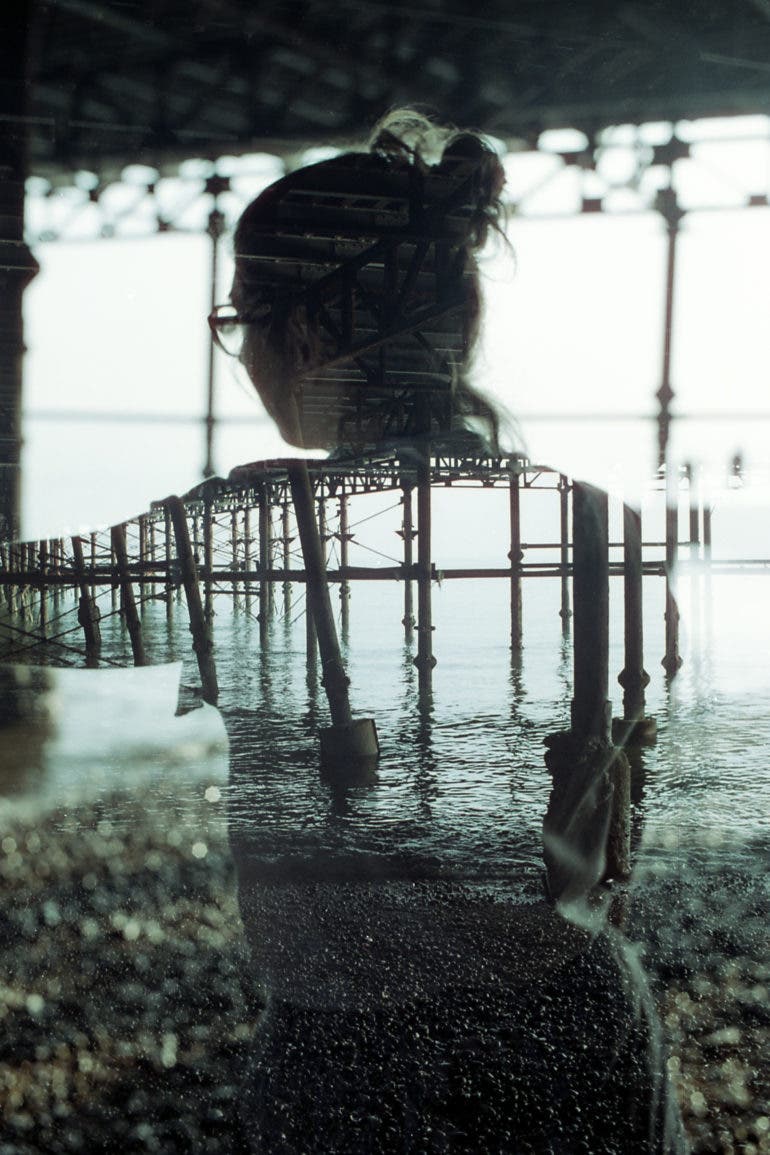
The Phoblographer: Can we see your film stock collection (I’m assuming you have quite a bit stored away)? What tips can you give us to preserve them for longer times?
Martin Ruffin: Sure! Here’s what I’m working with these days. As far as preservation tips, I’ll usually keep my higher ISO negative films in the fridge, but everything else I’m pretty laissez-faire about. Slide film doesn’t degrade in the way that negative film does, in my experience, and I love the pastel quality and more muted colours that their decreased sensitivity provides, so they can hang out in the cupboard. I also no longer have room in the fridge I share with my two flatmates for any more film, which does make life a bit more tricky. Fresh film > fresh food? Probably, yes.
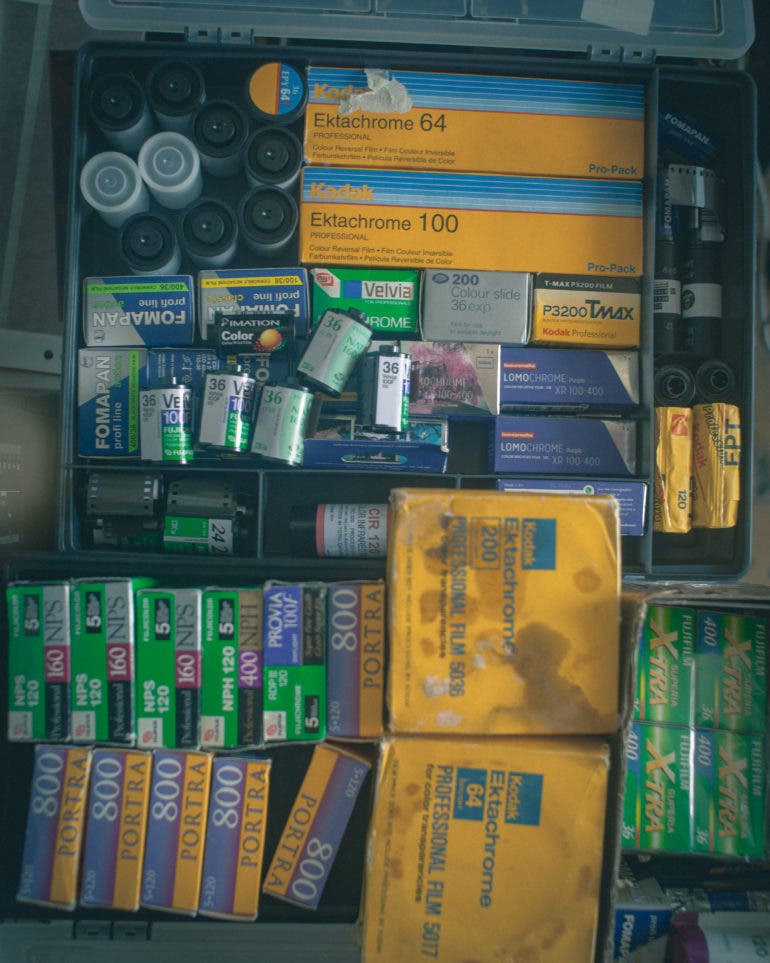
The Phoblographer: There’s also some fantastic double exposures (on film) in your portfolio. How complex can these be to calculate exposures for?
Martin Ruffin: Thank you! When I started shooting multiple-exposure work, I was a lot more attentive to exposure calculation, under-exposing each shot according to the traditionally recommended additive approach. However, I didn’t really find this led to the results I was hoping for, and over time my method has developed a little differently. Shooting low-light music venues on film was my education, which demanded paying real attention to the balance between highlights and shadows and manually exposing accordingly; and when it comes to double-exposures, I tend to more think along these lines rather than anything more technical. Anything dark in, say my initial image, will act as the canvas for anything brighter in the following exposure, and so on, provided my manual settings are consistent. It’s super simple to just go up/down a stop or two to make a similarly lit subject serve a different purpose within a multiple-exposure shot. The only territory where I’m a bit more thoughtful is when combining lens filters with this approach, especially using a Splitzer(double exposure filter)*. In these cases, it’s a lot more important to make sure I’m compensating for how the lens filter may respond to aperture/focal length changes, which thankfully, my camera’s depth-of-field preview levers do just fine.
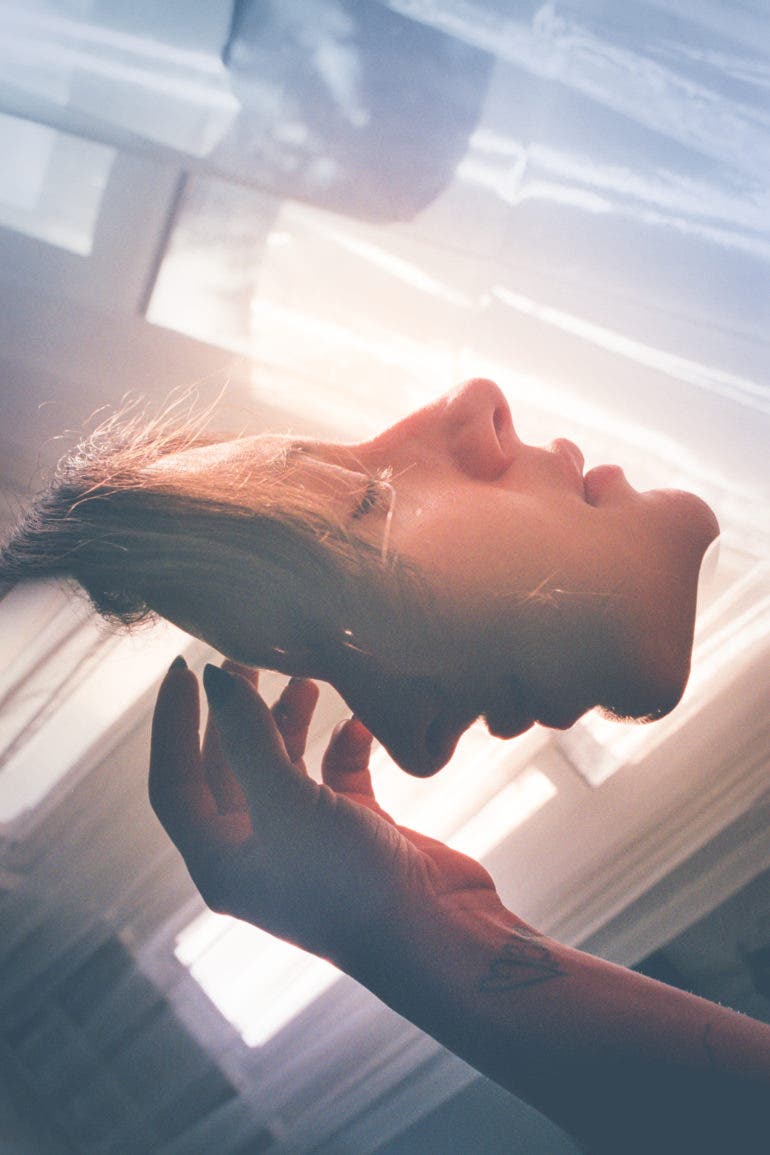
The Phoblographer: Do you double expose each frame at a time, or is it a roll being exposed twice from frame 1 to 36?
Martin Ruffin: I’m exposing each frame at a time, in-camera, rather than reshooting finished rolls. I see the appeal in that approach, especially when sharing experiments with others, but for my purposes, I prefer the control, as what I’m often shooting in that way is pretty intentional, at least in terms of framing. Thankfully, all of the bodies I use allows me to decide whether I want to double-expose a shot AFTER my initial photo rather than before, and I’ll often leave my camera on a shot, without winding on, just in case I stumble across anything that I think might complement it, however much later that may be, which is invaluable to the way that I shoot.
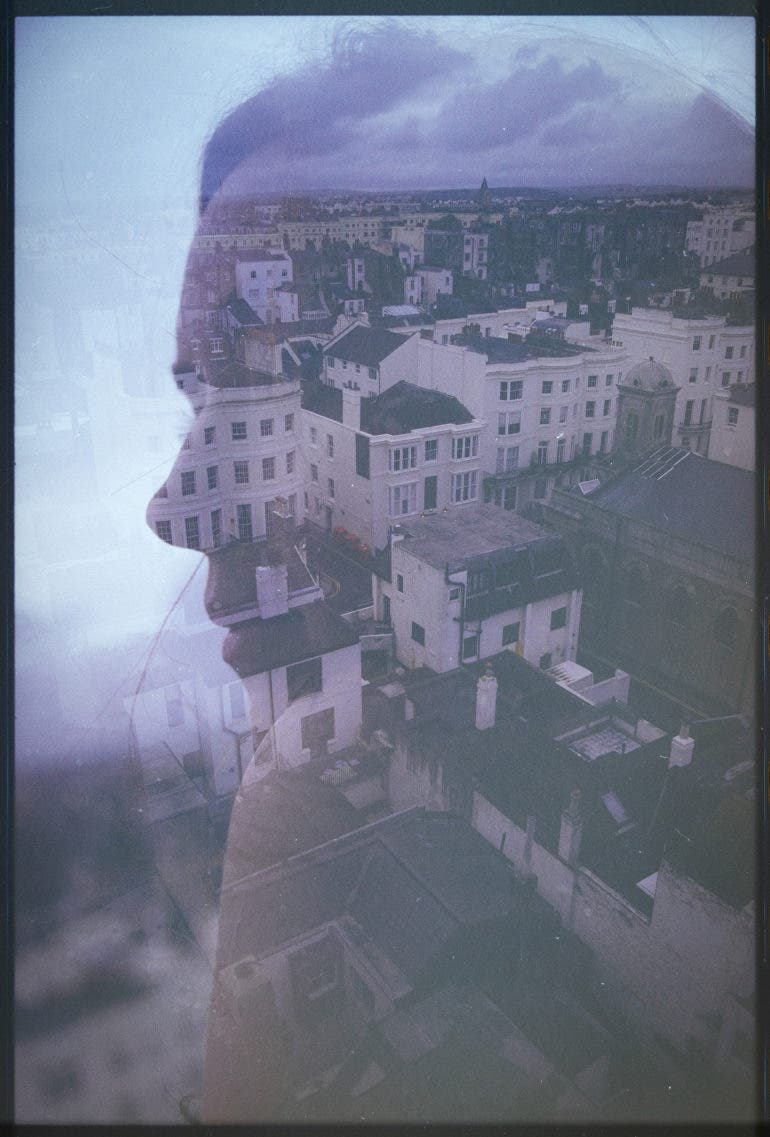
As one important technical aside; having eventually become disappointed with lab scans cropping my images, I’ve set up and refined a DIY DSLR-‘scanning’ set up to ensure I have full control over the quality, resolution and cropping of my images.
The Phoblographer: Is the Nikon FE2 your favourite body? What lenses do you enjoy pairing it with?
Martin Ruffin: In a purely boring, pedantic way, I prefer my FE to FE2 purely because it lets me meter the first few shots of any roll before the frame counter hits 0 and has a useful battery meter. Otherwise, they’re interchangeable for my purposes. The lenses i’m mostly using with these are a 16mm Zenitar 2.8, 24mm Tamron 2.5, 35mm Nikkor F2, 50mm Nikkor F1.4, and 135mm Tamron 2.5. Most of these decisions have been made based on the availability of equipment and what I can afford, rather than anything more considerate.

A body like the FE really suits my work for the following reasons: great metering even in low light, mirror lock-up whenever I need it, no wasted shots at the start of a roll, accurate manual focussing under F2(something my F100 can’t do), and super simple multiple-exposure functionality.
The Phoblographer: Into Eden, Subterranium, Haunted. Almost reminiscent of romantic paintings. Was this the intent or did these come about from experimentation?
Martin Ruffin: That’s certainly something I’d aspire toward, so it’s wonderful to hear that.. Fundamentally, I want to make photos that represent my own experience of reality and my need for escapism within that. I live with (and mostly manage) a personality disorder, so I experience a lot of ‘unreality’, dissociation, and in more basic terms, my brain treating me like an asshole. Often, what I’m choosing to shoot in the moment itself feels like an active act of defiance against that mindset, and sure, I do think that might lead to a more romantic, abstract approach. But ultimately, I’m looking to put myself in situations where what I’m seeing through my camera is invoking SOMETHING in me, enough to justify taking that shot and letting instinct guide my experimentation in the moment itself. The photos I might be most attached to aren’t necessarily the most technically amazing, but ones that represent those moments to me; a moment I gave myself an opportunity to feel a different kind of feeling than that which my serotonin levels dictated, and led to something I can feel proud of instead. I’m not going to glibly pretend that this connection happened overnight, but photography is as much about reflection as it is practice, and over the years, I’ve made a considered attempt to notice what it is about my work that actually sparks my interest, feels representative, what’s worth refining or developing, and I guess where I’m visually at these days feels like the natural progression of that.

The Phoblographer: And lastly, please tell us the story of Eva.
Martin Ruffin: Wow. This was actually one of the first photos I ever took that gave me the feeling above. Eva had come to visit me at my seaside home in Hastings back in around 2016, to be a friend following a pretty traumatic break-up. We had met during my time at university, during which a series of unfortunate events left me homeless before my second year. Incredibly, despite our relatively recent acquaintance, Eva decided to convince their family to put me up in their spare room until I found a home(for which I remain eternally grateful), and for many years after, they were often who my mind would reach for, when needing some internal optimism about humanity. Anyway, context aside, on this day we went for a walk along the beach to Bexhill, cameras in hand, it being probably one of the first times I’d left my flat in a few weeks for anything other than essentials, and the little glimmer of excitement I felt when seeing this shot appear through my viewfinder, as Eva had a little wander to the beaches edge, was the first crack in the clouds I’d felt in a while. This photo will always have a special place in my heart for that.

All images by Martin Ruffin. Used with permission. Check out his website, Instagram, and Reddit pages to see more of his work. He’s also working on a few photo books to be released in early 2022.